Woerden 作者: 来源: 发布时间:2021-04-29
一、所属省或是州,具体位置,人口,面积
Woerden is a city and a municipality in the central Netherlands. Due to its central location between Amsterdam, Rotterdam, The Hague and Utrecht, and the fact that it has rail and road connections to those cities, it is a popular town for commuters who work in those cities.
Population: 52,197 (Aug 2017)
Province: Utrecht
Mayor: Victor Molkenboer (PvdA)
Area code: 0348
Area
• Total 92.92 km2 (35.88 sq mi)
• Land 89.35 km2 (34.50 sq mi)
• Water 3.57 km2 (1.38 sq mi)
Woerden is a city and municipality in the Dutch province Utrecht. Woerden is located in the east of the Green Heart (Groene Hart) of the Netherlands, the green zone surrounded by the Randstad. Outside built up areas, Woerden is mostly meadows and farmland. Woerden is located on the banks of the Old Rhine river, which used to be the main branch of the river Rhine until the 12th century. In Roman times, this river was the north border of the empire and an army unit was stationed where Woerden is now. The municipality, which comprises other towns and villages in the neighbourhood (it's more than ten times the surface area of the city), has a population of about 50,000. The city of Woerden proper has about 34,000 inhabitants.
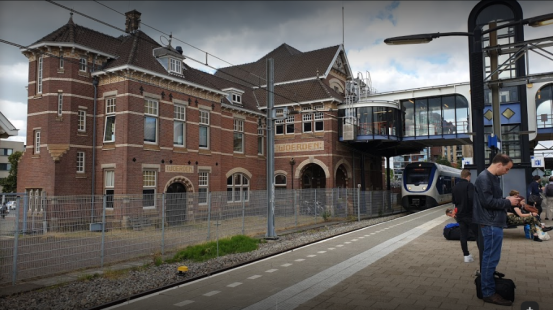
二、自然地理(地理环境、自然资源,交通情况)
Woerden is located at 52°5′N 4°53′E in the west of the province of Utrecht in the center of the Netherlands.
Province: Utrecht
Country: Netherlands
Area code: 0348I
Outside built up areas, Woerden is mostly meadows and farmland.
Rail accidents
Woerden train accident (November 1960), accident with a British furlough train (2 deaths, 10 injured)
Harmelen train disaster (January 1962), head-on collision, the worst railway accident in the history of the Netherlands (93 deaths)
Woerden has an "intercity" train station, direct trains run from and to The Hague, Rotterdam, Utrecht, Amsterdam, Gouda and Leiden. Trains are run by the Nederlandse Spoorwegen (NS, "Dutch Railways"). From the international airport Schiphol near Amsterdam, Woerden can be reached by train, by changing in either Leiden, Amsterdam Bijlmer Arena or Utrecht. The train station is located very close to the city centre. Woerden is not serviced by night trains; trains only run from 5-6am to midnight-1am (depending on the destination). If you want to reach Woerden by public transport outside these hours, take a night train to Utrecht and from there a night bus or a taxi to Woerden.
Woerden railway station is the railway station of Woerden, Netherlands. The railway station was opened on 21 May 1855 on the Utrecht–Rotterdam railway. In 1911 a new building was built in Jugendstil, that still exists.
Address: 3445 AA Woerden, Netherlands
Opened: May 21, 1855
Province: Utrecht
Architectural style: Art Nouveau Architecture
Line(s): Utrecht–Rotterdam railway; Woerden–Leiden railway
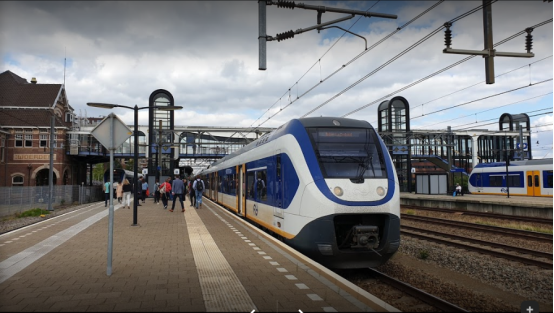
By bus
Woerden's main bus station is located next to the train station, on the north side (city centre side). A smaller hub is located at the south side of the train station. Regional buses run from Utrecht, Bodegraven, Nieuwkoop, Mijdrecht and Breukelen and are operated by Connexxion.
By car
Woerden is located just to the north of the highway A12, exit 14. The A12 runs between The Hague and the German border, near Arnhem. From the north, Woerden can be reached by exiting highway A2 near Breukelen, then continuing on provincial roads N401 and N212 via Kockengen and Kamerik. From the south (Belgium), take the A27 or A2 motorways to Utrecht, then change to the A12 motorway westwards and take exit 14. Woerden's main regional roads are the N458 from Bodegraven, the N405 from Kamerik, the N212 from highway A2 and Wilnis/Mijdrecht/Vinkeveen, the N198 from Harmelen/Leidsche Rijn and the N204 from Linschoten/Montfoort.
By boat
The Old Rhine river flows through Woerden, there are small harbours in the centre of the city and in the northwest of the city on the Grecht canal, which leads to the Nieuwkoopse Plassen.
三、经济发展和规模
Vision 2022
In Vision 2022 you can read what the municipality's vision is for living, working, recreation, care, safety and quality of life in 2022. The vision was drawn up in 2008.
四、产业特点/重点项目
1, Cheese markets where farmers' cheeses have been weighed, tasted and prices for the past 300 years still exist in Woerden and Gouda.
Website www.bol.com
Headquarters Utrecht (Netherlands)
Size 1001 to 5000 employees
Founded 1999
Type Subsidiary or Business Segment
Industry Internet
Revenue $1 to $2 billion (USD) per year
We are the largest online retailer in the Netherlands and Belgium.
2, Deposit on small plastic bottles
It took a long time, but from July 2021 the time has come. From that date, there is also a deposit on small plastic bottles.
The municipality, affiliated with the Statiegeldalliantie, is very happy with this development. It is a major step forward in the fight against plastic pollution! In countries where deposits were introduced, the number of cans and plastic bottles in litter fell by 70 to 90% according to a study commissioned by the Dutch government.
For bottles of less than a liter you will receive 15 cents on return, for larger bottles up to three liters this will remain 25 cents, just like now. From 1 July next year, you can hand in your empty plastic bottles not only at the current collection points in the supermarkets, but also at manned points of sale at train and petrol stations. In total, there will be around 12,000 collection points to make handing in as easy as possible.
A deposit on cans will follow in 2022 if the packaging industry is unable to drastically reduce the number of cans in litter and residual waste before autumn 2021. Until then: in the PMD bag!
Intratuin
Headquarters: Korenmolenlaan 3a, Woerden, Utrecht, 3447, Netherlands
Phone: +31 348 439 100
Website: www.intratuin.nl
Employees: 206
Revenue: $39 Million
SIC Code 5251,525
NAICS Code 444,44
Home Improvement & Hardware Retail
五、风景名胜,景点
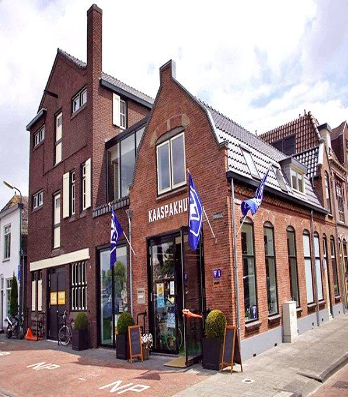
Cheese Warehouse
ADD: Emmakade 6a, 3441 AJ Woerden
Tel: +31 348 745492
Entrance fee: € 6.00
Mon-Sat 10am–5pm
Sun upon request
Evenings upon request
You must call and reserve a time slot prior to your visit! Discover the story about cheese making and cheese ripening. This cheese warehouse was built in 1937.
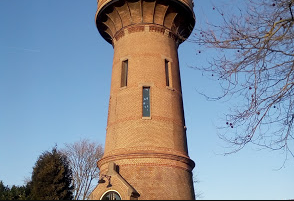
Dutch Water Line
Address: Blekerijlaan 14, 3447 GR Woerden, Netherlands
Province: Utrecht
Battles/wars: Third Anglo-Dutch War
Controlled by: Netherlands
Materials: Plain, Brick, Steel
The Dutch Water Line was a series of water-based defences conceived by Maurice of Nassau in the early 17th century, and realised by his half brother Frederick Henry. Combined with natural bodies of water, the Water Line could be used to transform Holland almost into an island. In the 19th century, the Line was extended to include Utrecht.
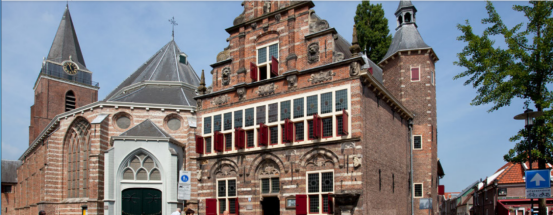
City Museum Woerden
The City museum (Stadsmuseum) is located in the heart of Woerden. In this former 16th-century 'Stedehuys' with a pillory, both history and art can be admired. The museum building itself is already an attraction. In front of the façade you find a sandstone pillory, dating from 1567, which is unique in the Netherlands. On the first floor you can visit the beautiful Vroedschapszaal, with various temporary- and permanent exhibitions.
Add: Kerkplein 6, 3441 BG Woerden
Call: 0348 - 431008
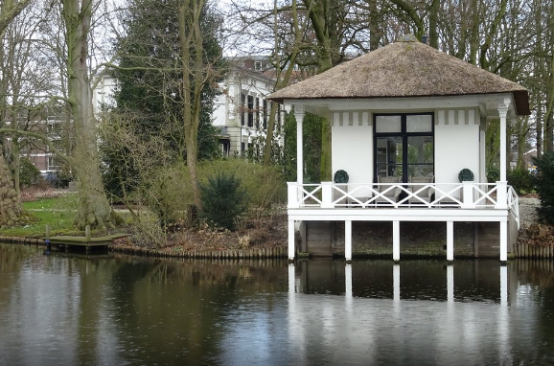
Landgoed Bredius Park
Kievitstraat 42, 3443 BG Woerden
info@landgoedbredius.nl
Vegetables, fruit and flowers for sale in the vegetable garden
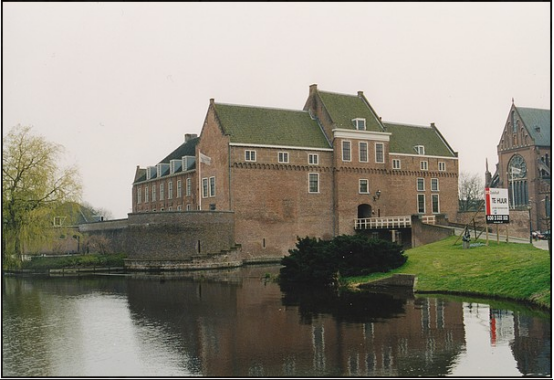
Woerden Castle
Woerden Castle, locally known as Kasteel van Woerden, lies in the city of the same name, in the province of Utrecht in the Netherlands.
Woerden Castle was preceded by an earlier castle build in 1159 by the bishop of Utrecht to defend his bishopric against the County of Holland. The present castle dates back to 1407 when it was build by Jan van Beijeren, bishop of Liège.
The castle was built only for military purposes and was never used as a nobleman's residence. So in some places the walls are over 3,5 meter thick to withstand enemy fire. There are also artillery corridors under the castle which are unique in the Netherlands. With the passing of the centuries however the military threat diminished, so, at some point in time, the towers were dismantled and they are now only half their original height.
When in 1672 the French invaded the Netherlands, destroying many castles on their path, they also tried to blow up Woerden Castle. This was however prevented by the people of Woerden who stole the fuse before they could ignite the gunpowder.
Until the 19th century the castle was used as a prison. There's even a pit prison in the northwest tower, which was used for unruly prisoners. In the 20th century the castle was part of military barracks and used for storage of all kinds of goods but poorly maintained. This caused severe decay.
In 1989 the castle was thoroughly renovated and in the 1990's it was hired by an ICT company who used it as an office. Some years ago this firm had moved out due to financial troubles and the castle was, once again, put up for hire. It has now been renovated and serves as a restaurant and conference location.
六、历史文化
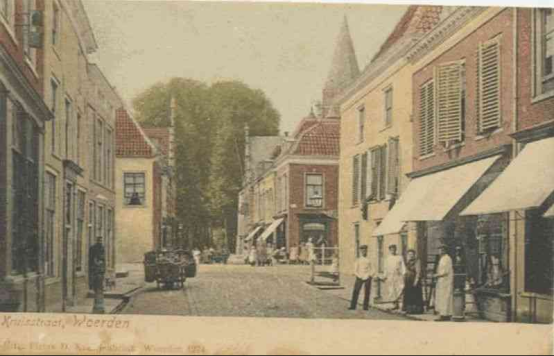
The river Oude Rijn used to flow through the city center of Woerden, but in 1960 the old river was diverted around the city center. The city has a long and rich history in cheese making and trading; for years Gouda cheese for domestic and international use has been produced in this region. Woerden still holds its authentic (since 1885) cheese market at the market place in its center.
Roman castellum
Woerden is situated on the river Oude Rijn, near the confluence with the former Linschoten (water) stream. The lower stretch of the Linschoten stream from Montfoort and Linschoten to Woerden silted up a long time ago and its flow was diverted through the Lek and Hollandse IJssel rivers, but at one time it was an important branch of the Rhine delta, connecting the Lower Rhine from Wijk bij Duurstede to the Oude Rijn near Woerden. Near the former confluence was an area that was slightly more elevated than the surroundings, a natural levee, which -in an area that is prone to flooding- made it an attractive location for settlement.
Here, at the highest spot, the Romans built a castellum (Castellum Laurum), as part of the limes of the Roman Empire and thus part of the defense lines of the northern border of the Roman Empire. The first castellum was built in the 40s AD, and was destroyed in 69 AD during the Batavian rebellion. In 70 AD the castellum was rebuilt, and the Romans remained until 402 AD, with an interruption lasting from about 275-300 AD.
The Castellum was located at the present site of the medieval Petruschurch and surrounding church yard. During construction work on a new underground parking facility in the city center of Woerden, the remains of numerous old Roman buildings and a Roman cargo ship were found. During field research, a lot became known about the Roman time in Woerden: the location of the castellum, the zone of defense waters with the entrance road and the remains of a Roman cargo ship.
The dark ages
Little is known about the period after the Romans left for good in 402 AD. It may be assumed that people continued to live here, but there is no archeological evidence. The area was contested between Frisians and Franks. Frankish King Dagobert I conquered the area around 630, and a small church was built in nearby Utrecht. Around 650 the Frisians came back, destroyed the Frankish church in Utrecht, and the Frisian king established his court there. Then, in 689 king Redbad was defeated by Frankish Duke Pippin of Herstal in the battle of Dorestad and the Franks regained control of the area. King Redbad reconquered Utrecht after Pippin died in 714, but the Frisian victory was short-lived: Duke Charles Martel defeated Redbad in 718. In 734 Charles Martel went on to vanquish the Frisians, in the Battle of the Boarn.
The missionaries followed in the footsteps of the Frankish conquerors: In 695 AD Willibrord, known as the "Apostle to the Frisians" became Bishop of Utrecht, with interruptions due to Frisian incursions. Boniface worked here from 719–722. Liudger reports that Boniface preached in Wyrda, referring to Wierde, meaning that the place was on higher ground in the area. Around 850 the Bishop had to leave once more, this time because of Viking marauders. Bishop Balderik returned to Utrecht in 918, after the Viking threat subsided. The Bishop claims Woerden as part of his jurisdiction: In a list prepared between 918 and 948 it is mentioned that In UUrdin totum Sancti Martini, meaning: In Woerden everything belongs to Saint Martin, i.e. the church in Utrecht.
Between bishop and count
The Bishop of Utrecht received land grants, first from the Frankish kings, and later from the Kings of Germany, in particular Otto I, Holy Roman Emperor. In 1024 AD the bishops were made princes of the Holy Roman Empire and the new Prince-bishopric of Utrecht was formed.
Around 1000 AD, settlement was limited to the river banks; further inland were undeveloped bogs. The bishops used their new authority to stimulate reclamation of this wilderness. Concessions were granted to settlers, who drained the bogs by digging dividing ditches beginning from rivers and streams and stretching about ¾ mile inland, thus creating the characteristic grid of fields still seen today. By about 1300 AD the reclamation process had been completed.
In the meantime a competing realm had developed to the west, along the coast. First known as West Frisia it became known as Holland when Floris II, Count of Holland moved his court to Leiden in 1101. The Counts of Holland expanded their influence, and by 1165 they built a fort called Svadeburg, near present-day Zwammerdam, about 7 miles to the west of Woerden. Around 1160 Bishop Godfrey van Rhenen built a castle in Woerden. Once more Woerden became a border town between two belligerent powers, a situation that lasted until 1527 when the Bishop of Utrecht sold his territories to Emperor Charles V and the two statelets were united under Charles' rule. Due to its strategic location on the border between the County of Holland and the Bishopric of Utrecht, various wars have been fought in and around Woerden by the various lords and ladies of these realms.
From about 1131 to 1296, the van Woerden family dominated local affairs in Woerden. Several scions of the family are known as Herman van Woerden. Originally they were stewards of the castle for the Bishop, but in time they sought to become independent. In 1274 Herman VI van Woerden formed an alliance with Gijsbrecht IV van Amstel, and revolted against bishop-elect John of Nassau. In 1278 Floris V, Count of Holland, intervened on the side of the much weakened bishop, and defeated the rebellious lords. Gijsbrecht was taken prisoner, and Herman went into exile. In 1281 Floris V was awarded the lands of the rebellious lords, including Amsterdam and Woerden. In a 1288 peace agreement Floris restored the Lordship of Woerden to Herman van Woerden, but now as a vassal of the count. However, Herman did not prove himself to be a trustworthy vassal: in 1296 the humiliated lords Gijsbrecht IV van Amstel and Herman van Woerden entered the scene again as part of a conspiracy. Together with Gerard van Velzen they captured count Floris during a hunting party and the count was assassinated. In the aftermath Gerard van Velzen was killed, and Herman van Woerden went again into exile. In 1300 John II, Count of Holland awarded the Lordship of Woerden to his brother Guy of Avesnes, who became Bishop of Utrecht the following year. In 1311 Guy returned the Lordship to his nephew, Count William III, and Woerden remained part of Holland thereafter.
Around 1370 bailiff Willem II van Naaldwijk [nl] ordered the construction of defensive walls and a moat to fortify the city, in order to shield Holland from renewed hostilities with Utrecht. Woerden received city rights from Albert I, Duke of Bavaria, and Count of Holland in 1372, even though Woerden was still a small town that harboured no more than about 720 citizens. Around the same time the Petruschurch was built; part of its steeple still stands. In 1410 John III, Duke of Bavaria-Straubing had the castle of Woerden constructed, and in 1510 the city hall was built. These buildings still exist, although the castle was extensively altered and renovated through the years.
On November 1, 1425 Woerden chose the side of Philip the Good in the conflict with Jacoba van Beieren, after Philip confirmed the town privileges and promised that the Lordship of Woerden would never be separated from the County of Holland by awarding it to someone else. During the reign of the Dukes of Burgundy, Philip the Good (1419–1467) and Charles the Bold (1467–1477) Woerden enjoyed an unprecedented period of peace, and by 1477 its population had almost tripled to about 1920. Charles the Bold's death before the gates of Nancy was the prelude to renewed unrest, both with Utrecht and the duchy of Guelders, and the town suffered economic hardship because of it.
Heretics and rebels
The reign of Charles V was a period of relative peace and prosperity for Woerden, despite religious unrest. In April 1522 Charles V introduced the Inquisition in the Low Countries.
Johannes Pistorius Woerdensis (Jan de Bakker), a catholic priest, was the first preacher in the Northern Netherlands to be martyred as a direct result of his religious beliefs. His father was a sexton in Woerden and also tenant of the brickworks, and his surname was derived from that profession.
Jan de Bakker was a pupil of Hinne Rode (Johannes Rhodius), headmaster of St. Jerome School of the Brethren of the Common Life in Utrecht. Rode was a proponent of Sacramentarianism, and in 1520 his father called Jan back to Woerden, perhaps out of concern about those heretic views. Jan transferred to Leuven, and in 1522 completed his education there. He returned to Woerden, was ordained in Utrecht as priest, and assisted his father as sexton and deacon.
Jan started to spread the heretic views, and in May 1523 he and another priest were arrested by the stewart of the castle. After a short while they were released, and it is thought that the two travelled to Wittenberg, but there is no evidence he met with Martin Luther. After he returned he continued his preachings, and the conflict with the Roman Catholic Church was further aggravated by the fact that he broke his celibacy, and got married. In the night of May 9, 1525 he was arrested and the next day transferred to The Hague, where he appeared before the Inquisition. He was defrocked and sentenced to death, and on September 15, 1525 burned at the stake in The Hague. His widow saved her live by recanting the heresies, and lived out her life in an abbey.
The city magistrates of Woerden were tolerant towards the Lutheran confession. In 1566 this resulted in a confrontation with duke Eric of Brunswick, who was Lord of Woerden at that time.
Although Eric of Brunswick was raised Lutheran he converted to Catholicism in 1547, much to the regret of his mother Elisabeth of Brandenburg. Eric served as commanding officer in the armies of Charles V and Philip II, and fought on their side in the Schmalkaldic War (1546–1547) and the Franco-Habsburg War (1551–1559). During the Battle of St. Quentin (1557) he distinguished himself by taking French Marshals Anne de Montmorency and Jacques d'Albon de Saint-André prisoner. These prisoners were very important to Philip II as bargaining chip during negotiations for the peace Treaty of Cateau-Cambrésis. In 1558 Philip II granted Duke Eric of Brunswick the Lordship of Woerden as compensation, over the objection of the city magistrates of Woerden who felt that this was an infringement of promises made by Philip the Good in 1425.
In the wake of iconoclastic riots that swept the country in 1566 a prominent citizen of Woerden, Warnaer Claesz, petitioned the city magistrates to introduce the Augsburg Confession. There was also a disruption of the church worship. As a precaution the city magistrates removed icons and other valuables from the church and stored them in a safe place, and closed the church. The court of Holland concurred with the actions taken by the city magistrates, but Duke Eric of Brunswick objected. He demanded that the Catholic worship would be restored. The city magistrates delayed by questioning his authority in this matter. Duke Eric responded by raising a small army and forced the city magistrates to comply.
Duke Eric was also instrumental in suppressing the ill-fated rebellion of Hendrik van Brederode, Lord of Vianen. After the rebel army was defeated in the Battle of Oosterweel (March 13, 1567) Eric of Brunswick captured Vianen on May 5, 1567.
In later history, the town saw occupation by the Spanish (1575, 1576) and the French (1672, 1673 and particularly disastrous in 1813).
Modern era
"De Windhond", a gristmill in the center of Woerden
In 1989 there was a local redrawing of province boundaries as a result of which Woerden found itself transferred from South Holland to the province of Utrecht. In 2015, the city's refugee centre formed the scene of a violent attack by 20 hooded people, bearing fireworks and pushing down fences.
七、其他信息
Extra help for low incomes
If you have a low income you can get extra money or a discount.
Remission of municipal taxes
You may be eligible for a tax exemption from municipal taxes. You do not pay a waste tax or sewer tax.
Waiver of water board taxes
You may be eligible for a waiver of water board tax. You can arrange this at BghU.
Money for unexpected costs
You will receive money if you cannot afford important unexpected costs. This is called special assistance. You can arrange this at Ferm Werk.
What are the options and conditions?
Special assistance is intended not only for people on social assistance benefits, but also for other people with a low income and wealth below the wealth limit. What you need to submit the application differs per person or situation. To qualify for special assistance, a number of conditions apply:
you live in the municipality of Woerden, Bodegraven-Reeuwijk, Oudewater or Montfoort
you have less assets than the amounts stated in the table below
you are not in prison
you are legal in the Netherlands
the costs / accounts for which you are requesting special assistance are not older than 1 month. Costs / Invoices older than 1 month are in principle not reimbursed.
if Ferm Werk decides that you are entitled to special assistance, the amount will depend on your income. If your income is less than the amounts stated in the table below, your costs are usually fully reimbursed. If your income exceeds the amount in the table below, part of your costs will be reimbursed.
Please note: other amounts may apply to you, for example because you live with your parents or because adult children live with you. For the exact amount, please contact one of the consultants of the Income department.
To request
You can request special assistance for a number of costs online (with DigiD). Namely for the cost of:
the personal contribution for legal assistance and / or registry costs;
the intake costs of administration;
the monthly administration costs
Extra money on top of income
If you have a low income for a longer period of time, you will receive extra money on top of your income. This is called individual income supplement. You can arrange this at Ferm Werk.
Money for sports, culture and school
If you have a low income you get money for sports, the newspaper and school. This is called the Declaration Scheme. You can arrange this at Ferm Werk.
Discount on health insurance
The Gemeentepolis is a health insurance for people with a low income, long-term illness or disability. You arrange this via Healthy Insured.
Apply for benefits
If you have no income or a low income, you can apply for a benefit. If you are younger than the state pension age and do not have a work disability due to illness or disability, please contact Ferm Werk. The municipality works together with Ferm Werk.
You are older than the state pension age
If you are older than the AOW age and do not receive a full AOW, you can get one on your AOW. This is called an AIO. You arrange this with the Social Insurance Bank.
You are limited in work due to illness or disability
If you are occupationally disabled due to illness or disability, please contact the UWV.
八、联系方式
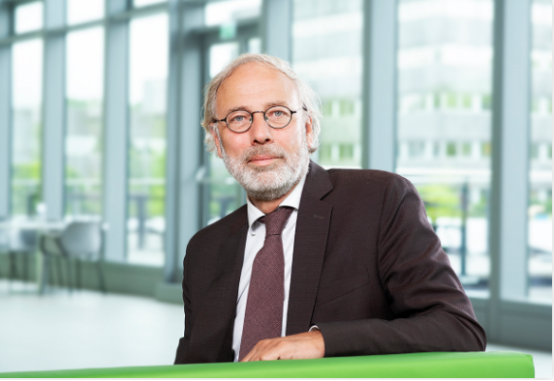
Mayor Victor Molkenboer
Victor Molkenboer was installed on 28 February 2013 as mayor of Woerden. He chairs the City Council and the College of Mayor and Councilors.
I will continue my strong approach to crime, I will strengthen contacts with you as residents in participation processes, I will make the celebration of Woerden 650 years of city rights a success for everyone with you, and I will seize even more opportunities to promote our city as to position the Gate to the Green Heart. Woerden has passed the average and is at the beginning of a new scale jump. Together we take this leap! ”
https://youtu.be/HBydwLlS09k
Contact
e-mail: molkenboer.v@woerden.nl
twitter: @vjhmolkenboer
Tel: +31 140 348
Address: Blekerijlaan 14, 3447 GR Woerden, The Netherlands
https://www.woerden.nl
